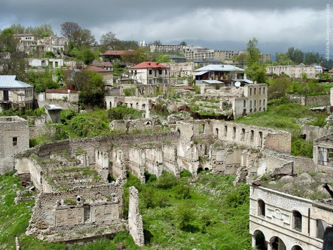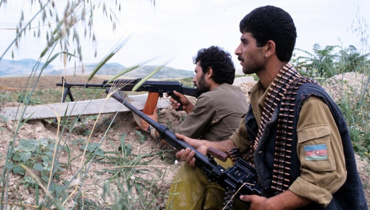Karabakh is one of the most ancient historic areas of Azerbaijan. The name of Karabakh, an integral part of Azerbaijan, is derived from the words 'gara' and 'bagh' in the Azerbaijani language. The collocation of the words «gara» and «bagh» has a history as ancient as the history of the Azerbaijani people. It is an undeniable and undisputable truth that this collocation is universally recognized as pertinent to a specific area of Azerbaijan. The word «Karabakh», with which the Azerbaijani people termed a piece of their own land, was first mentioned 1300 years ago (in the 7th century!). Karabakh used to designate a specific area, as a historic and geographic notion, but later on it gained a broader geographic sense with regards to Azerbaijan's territory. This is quite characteristic of Azerbaijan, too: town of Nakhichevan - province of Nakhichevan; town of Sheki - province of Sheki; town of Ganja - province of Ganja; town of Lenkoran - province of Lenkoran, etc.
The background of «Karabakh» forming up as the name of a specific area, province of Azerbaijan allows for a more scientific approach to explaining the etimology of the word. Because the word «gara» (black) in Azerbaijani (just as in other Turkic languages), in addition to signifying the color black, also means «close», «thick», «grand», «dense», among other things. In this context, the term «Karabakh» is interpreted as a «black orchard», i.e., a «grand orchard», «dense orchard», «thick orchard», «fresh orchard», etc. Thus, like Karabakh itself, the word «Karabakh» also belongs to the Azerbaijani people.
The contemporary state of Azerbaijan is rooted in the state of the Caucasian Albania. The area known today as Nagorno Karabakh used to be part of that state. According to the ancient sources, ethnically Albania was made up of a union of 26 indigenous Caucasian tribes and Turkic peoples. Albania had a rich and rare culture, a 52 letter alphabet. In 313 A.D. Christianity was declared Albania's state denomination, and an independent Albanian church was instituted. The tense and complicated environment did not let Albania enjoy its independence for long, though. In 705 A.D., Albania was taken over by the Arab Caliphate. This was followed by the Caliphate subjecting the Albanian church to the Armenian Gregorian church in order to disrupt the close ties that had existed between Albania and Byzantium as the Caliphate had formed an alliance with the Armenians against Byzantium.
In the middle ages Karabakh was part of a state governed by Turkic Muslim dynasties that existed in today's Azerbaijan's territory, and was inhabited by Turkic-speaking nations.
The 18th century was marked with the creation of the Karabakh Khanate ruled by the Turkic (Azerbaijani) Javanshir dynasty. It was an Azerbaijani Khanate ruled by the dynastic tradition of the Azerbaijani nobility, and the Azerbaijanis had a well-established dominance over the other dynasties and ethnic groups that lived there.
After Karabakh Khanate signed the Kurekchay Treaty (1805) with the Russian Empire the Khanate was forced to become subjected to the rule of the Russian Empire. Once the entire region of Caucasus was conquered the Russian Empire started implementing the «divide and conquer» policy using different means at its disposla in order to establish and strengthen its control over the territory. Resettling Armenians from Iran and the Ottoman Empire to Karabakh thereby artificially distorting the demographics of the region was part of the comprehensive measures taken to this effect. This area's ethnic composition changed completely after the Russian and Iranian (1806-1813, 1826-1828) and Russian and Ottoman (1828-1829) wars. Only during 1828-1830 over 40 000 Armenians were relocated from Iran, and 84 600 Armenians from the Ottoman Empire, to, and settled in Azerbaijan.
At the Russian Czar's orders in 1828 an Armenian province was established in the territory of the occupied Azerbaijani Khanates (Irevan and Nakhichevan). This was done for the purpose of instituting a state between the two beligerent parties, in the Ottoman Empire's backyard, and driving a wedge among Turkic-speaking nations.
Once the Gulistan Treaty of 1813 and Turkmenchay Treaty of 1828 were signed, concerning the distribution of the Azerbaijani territories between Iran and Russia, the plan of establishing an «Armenian state» was launched with a view to creating a buffer zone in Azerbaijan's ancient lands. 300 years before that, while pondering the outlines of the future empire, the Russian emperor Peter the First said to the emissaries he sent southwards: «We should endeavour to gather them (the Armenians) and bring them forth to our lands so that they be a stronghold for Russia».
To this end, up to 300 thousand Armenians were relocated from Iran and Turkey to Azerbaijan in the first half of the 19th century, and settled in Irevan (presently Yerevan), Nagorno Karabakh, Nakhichevan, Zangezur, Daralayaz, Ordubad, Vedibasar and other areas.
However despite the relocation of the Armenians to Azerbaijani lands, the Azerbaijanis still prevailed over the Armenians in terms of numbers. For instance, in 1886, out of the 326 villages in the region of Zangezur, province of Ganja, only 81 was Armenian. 66 percent of the population in the Irevan region were Azerbaijanis, while Armenians only accounted for 34 percent. In order to make the Armenians constitute the majority in these regions, a genocide policy was launched against the Azerbaijanis, with the Armenians secretly armed by the Czar Russia, and forming militia squads.
Relocation of Azerbaijanis from the present Armenia's and Nagorno Karabakh's territories on a mass scale, coupled with violence and atrocities against the peaceful population, was supported and promoted by the Russian government into the early 20th century as well, especially in 1905-1907.
Hundreds of villages were burned down in Azerbaijan's provinces of Zangezur, Irevan, Nakhichevan, Ordubad, Gazakh, Karabakh, with the population brutally slaughtered, young and old alike.
In March 1918 the leader of the Russian Bolsheviks Vladimir Lenin appointed Bolshevik Stepan Shaumyan as the Special Commissioner for the Caucasus, and sent him off to Baku. The Bolsheviks, seeking to take over the power in Baku, enabled environment for the secret intentions of the armed militia of the Armenian Dashnaks. A massacre of the Azerbaijanis ensued in Baku on March 31st. Stepan Shaumyan later admitted that the massacre of the peaceful Azerbaijanis involved six thousand armed troopers of the Baku Soviet (Council), as well as 3-4 thousand strong armed militia of the «Dashnaksutyun» party.
The three day long massacre the Armenian militants, with the help of the Bolsheviks, would spring into the Azerbaijani neighborhoods, and murdered the people, young and old alike. A German national named Kulner, who had the misfortune to eye-witness the atrocious murder spree, wrote in 1925 about the Baku events: «The Armenians would burst into the Muslim (Azerbaijani) neighborhoods, and slaughtered every single person in their way, slashing with sabres, and piercing with bayonets. A few days after the massacre the bodies of 87 Azerbaijanis were recovered from a ravine, and they all had their ears and noses severed, their stomachs ripped open, their sex organs sliced and smashed. The Armenians showed no mercy to children and old men alike».
Overall, two massacres committed by the Armenians in the South Caucasus in the first half of the 19th century (1905-1907, 1918-1920) claimed the lives of, or drove away from their homes up to 2 million Azerbaijanis.
57 slaughtered Azerbaijani women were recovered from just one place in Baku in the wake of the March massacre, with their ears and noses cut off, and stomachs ripped open. Young women were nailed to walls while still alive, two thousand people who found shelter in a city hospital from the Armenian assault were burned alive.
The Armenians even placed machine guns in special locations to shoot anyone who would try to flee the town.
The Dashnaki genocide of Azerbaijanis was not limited to Baku only. Shortly after, Shemakha, Guba, Irevan, Zangezur, Karabakh, Nakhichevan, and Kars also witnessed bloody slaughtering of Azerbaijanis.
In March-April 1918 up to 8 thousand of peaceful residents of Shemakha were murdered. Most cultural monuments, including the Juma (Friday) Mosque of Shemakha were burned and destroyed.
28 villages of the Javanshir region, and 17 villages of the Jabrayil region were completely burned down, and their residents annihilated.
On April 29, 1918, a 3 thousand strong Azerbaijani caravan, constiting mostly of women, children and old men, was ambushed and every single person was slaughtered.
The Armenian militants burned down a few villages in the region of Nakhichevan, destroyed 115 Azerbaijani villages in the Zangezur region, murdering 3257 men, 2276 women and 2196 children. Overall, the region's death or injury toll counted 10068 Azerbaijanis, while 50000 Azerbaijanis fled as refugees.
135 thousand Azerbaijani residents of 199 villages of the Irevan province were killed, and the villages were razed to the ground. Afterwards the Armenian militants marched to Karabakh, destroying 150 villages in the highlands of Karabakh, with their residents murdered. (The ADR Government, from the case files of the Extraordinary Investigative Commission).
In May 1920 the Armenians, jointly with the 11th Red Army murdered over 12 thousand Azerbaijanis in Ganja.
As the Soviet and Iranian relations were being discussed during the 1943 Tehran conference, the Armenian diaspora requested V. Molotov, Minister of Foreign Affairs, USSR, to have the Armenians living in Iran relocated to the USSR. Molotov brought this up to the Chairman of the Central Committee of the Communist Party of the USSR, J. Stalin, and a consent was granted for the Armenian relocation. G. Arutyunov, Secretary of the Armenian Communist Party's Central Committee, used this opportunity and managed to get an ordinance passed that effectively forced Azerbaijanis out of Armenia under the false pretense of relocating Armenians from foreign countries to Armenia.
On December 23, 1947 the USSR Council of Ministers passed a directive «On relocating collective farmers and other Azerbaijani nationals from the Armenian SSR to the Kura-Araz lowland of the Azerbaijan SSR».
In course of another deportation of the Azerbaijanis ordered by Stalin in 1948-1953 the Armenians focused primarily on vacating economically, socially and culturally strong Azerbaijani settlements of strategic significance. In this context, the settlements near the city of Irevan (presently Yerevan) were 'cleansed' from the Azerbaijani residents, following by the cleansing of regional centres, adjacent villages and towns. As a part of the population deported lived in the highland areas of Armenia they had a real hard time adapting to the climate of the Kura-Araz lowland. As a result, numerous deaths were reported among the tens of thousands of Azerbaijanis resettled to the Kura-Araz lowland.
On the other hand, not a single Azerbaijani deported from Armenia was admitted to Nagorno Karabakh. On the contrary, the action plan of vacating this territory of Azerbaijanis with a view to realizing the «Great Armenia» idea was continued on a fast track, resulting in 132 families (549 people) forced out of Nagorno Karabakh to the region of Khanlar, Azerbaijan, in 1949, under the false pretense of internal relocation.
In the meantime, the Armenians swiftly worked to rename the Azerbaijani towns and villages, shut down schools and cultural centers, and uniting different regions. 60 Azerbaijani settlements were renamed in 1947-1953. All in all, hundreds of Turkic-origin settlements in Armenia were renamed during the period of 1921-1988.
The cunning device the Armenians employed during the deportation was that while the regions and towns were vacated from the Azerbaijani population they still retained a small portion of Azerbaijani nationals in those places. This remaining minority was fully removed in the next phase - in course of the complete 'cleansing' of Armenia of Azerbaijanis.
The territorial claims of the Armenians on Azerbaijan, including their infamous claim on Nagorno Karabakh, are part of their strategic plan to create the «Great Armenia». In this view, the Armenians, staying true to their «traditions», promtply took active measures to execute this plan as soon as they were afforded any opportunity to this effect. As the pro-Armenian M.S.Gorbachyov came to power in the USSR in 1985, the Armenian separatists became active once again.
Only this time it became clear and apparent that the Soviet leadership supported and protected the Armenian separatism-oriented terrorists. In executing a secret plan concerning the Autonomous Region of Nagorno Karabakh, M.S.Gorbachyov's first step was to remove the strongest obstacle in his way, Heydar Aliyev, from the Political Bureau. A little while after, in November 1987, a member of Gorbachyov's team, A. Aganbekyan, an Armenian academician, made an open statement in Paris that he had made a proposition to the Soviet leadership with respect to Nagorno Karabakh, and said he was looking forward to finding a solution to this problem in the context of reconstruction («perestroyka») and democracy. The Armenian «Karabakh Committee» that had previously operated in secrecy, and its separatist / terrorist arm «Krunk» («Crane») operating in the Autonomous Region of Nagorno Karabakh, moved into the open, forming the «Miatsum» («Unity») movement. This movement relied heavily on the capacities offered by the Armenian, Nagorno Karabakh, Moscow leadership, and Armenians throughout both USSR and the world. Events took a more aggressive turn in February 1988. A wave of rallies by separatists and Armenian nationalists surged in Irevan and Stepanakert in February. On February 20th, the Nagorno Karabakh Autonomous Region's Council session petitioned the High Council of the Azerbaijan SSR to review the region's status.
This clearly indicates that the Armenians had switched tactics from what they had employed in November 1945. In the post-World War II days, they launched an intensive propaganda, widely using the help of the Armenian diaspora abroad, to distort and twist the global community's perception of Nagorno Karabakh into what suited their needs best. And so they had to move out into the open with their claims this time around. The then-current leadership and the society of Azerbaijan as a whole were utterly unprepared to deal with the new tactics of the Armenian separatists and their protectors. As such, the government failed to conceive a well-devised policy of tackling the Armenian plans on the heels of the murder of two young Azerbaijanis and the wounding of 19 more by the Armenian separatists / terrorists in the region of Asgeran on February 24th. A series of murders shook Azerbaijan's major industrial center, the city of Sumgayit, in late February, that were carefully planned and executed by the Armenian secret service and USSR State Security forces. But before long it became evident what was actually behind the Sumgayit events. As planned, these events were immediately used to launch an anti-Azerbaijani campaign in Armenia and take measures to slice the Autonomous Region of Nagorno Karabakh out of the Azerbaijan SSR. «4 residents of the Azerbaijani village of Mehmandar, south of Irevan, were murdered on March 10th. On March 25th, over 100 houses were destroyed in the Azerbaijani villages of the Ararat region, with the residents driven away. Another assault on the Azerbaijani villages near Irevan took place in mid-May...». The history of the Armenian bloody, nefarious transgressions and atrocities against the Azerbaijani people was once again repeating.
It also became evident that the Central Committee of the USSR's Communist Party and Soviet leadership were not interested in making a realistic evaluation of the existing situation as the Armenian separatists / terrorists were went rampant on a killing spree. A directive was issued on March 24, 1988, «On accelerating the socio-economic development of the Autonomous Region of Nagorno Karabakh of the Azerbaijan SSR in 1988-1995», which was a decoy, a plot to cover up the true separatist nature of the events. This kind of high level support encouraged the Armenian separatists even more, resulting in greater aggression. A.Vezirov-led Azerbaijani government bowed to Moscow, betraying their own people while conceding to the aggressors in any way possible. Finally, Moscow made yet another step to remove the Autonomous Region of Nagorno Karabakh from the Azerbaijan SSR: the USSR High Council Presidium passed a directive on January 12, 1989 «On introducing a special form of governance and public administration in the Autonomous Region of Nagorno Karabakh of the Azerbaijan SSR». The purpose of that directive was very clear: the Special Governance Committee established in the Autonomous Region of Nagorno Karabakh was tasked with taking the Autonomous Region away from Azerbaijan and handing it over to Armenia. However, the Azerbaijani people quickly realized this and stood united against this initiative, which led to the disbanding of the Special Governance Committee on November 28th. However a new body was established in its stead - the Organization Committee. The Armenian SSR used the circumstances and quickly passed an anti-constitutional act of joining Nagorno Karabakh to Armenia on December 1st. This act was a clear legalistic encroachment on the part of Armenia on the territorial integrity of the Azerbaijan SSR. As expected, Moscow turned the blind eye to this completely illegitimate action, furhter intensifying the situation. This time around, Gorbachyov-led USSR leadership committed another despicable crime against Azerbaijan, specifically targeting Baku. Trampling its constitutional obligations to their citizens, the Soviet government orchestrated and executed a bloody massacre on the night of 19 to 20th of January, 1990 in Baku, deploying state-of-the-art equipped and armed troops and war machinery. Armenian soldiers and officers also took an active part in the Baku massacre. But the 20th of January massacre could not break or bend the Azerbaijani people's will - on the contrary, it served to further strengthen the nation's willingness to fight for independence and territorial integrity. On the morning of the next day of the massacre, Heydar Aliyev came to the representative office of Azerbaijan in Moscow and openly condemned the Soviet leadership's criminal actions, thus stepping into the forefront of the nation's just struggle - the struggle for Liberty. The Azerbaijan SSR High Council passed a statement restoring the state sovereignty on August 30th, 1991, and adopted the Constitution Act of state independence on October 18th. The Armenian separatists of Nagorno Karabakh used the circumstances to continue with their political organization. In September 1991 they declared establishment of a toy regime called «Nagorno Karabakh Republic». The Republic of Azerbaijan refused to recognize this regime, and the Nagorno Karabakh Autonomous Region's status was annulled on November 26th.
In the late 1991, as the USSR collapsed, the former Soviet Union countries were facing a new geopolitical reality. Armenia practically waged an open and unjust war on Azerbaijan. Armenian troops breached Azerbaijan's state borders and entered Karabakh, and, having united with the Armenian separatists / terrorists of Nagorno Karabakh, started occupying Azerbaijani lands.
The A. Bakikhanov Institute of History, National Academy of Sciences of Azerbaijan

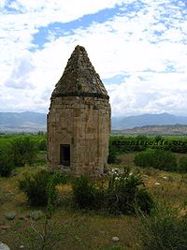
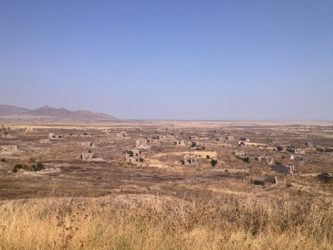
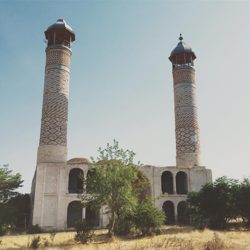

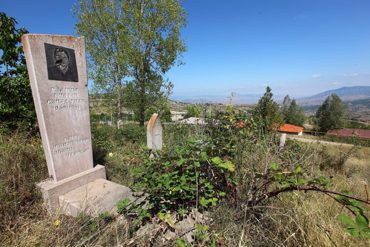
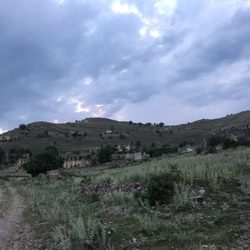
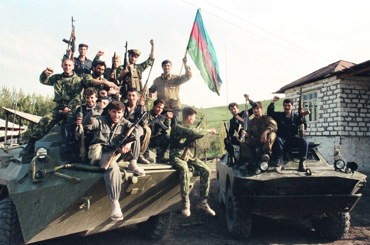
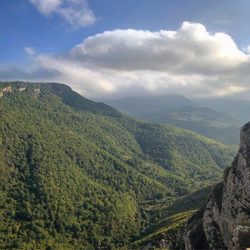
.jpg)
